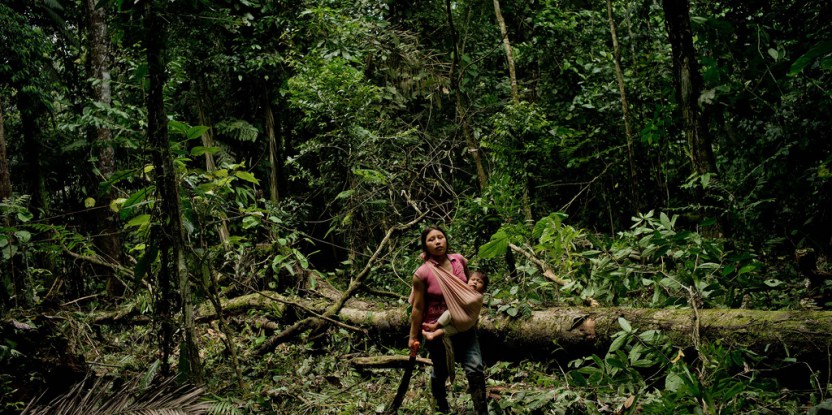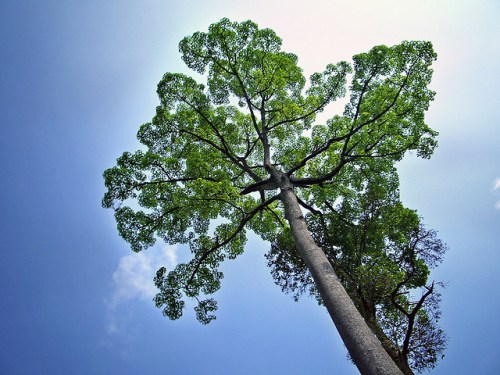The “slow food” movement centers on “good, clean and fair” food that provides a healthy diet while reflecting and maintaining local culture and traditions. A break from the focus on hasty and mass-produced meals for people on the go, slow food requires careful attention, time and effort but is well worth the wait.
Consider the SDGs the “slow food” of global development — a sometimes painstaking process that if “prepared” correctly could promote good, clean and fair outcomes for the environment and for people for the next 50 years.
As with any complex dish or cuisine, patience will be needed in the crafting of the Sustainable Development Goals over the next 12 to 15 months. Diverse viewpoints are gradually coming together in UN meeting rooms in New York — and we are among the many who hope and believe that the final product will be worth the wait.
And despite some fears, one of the key ingredients in the mix — forests — is amply represented. It is up to us to show how.
Following 12 months of discussions around the most pressing development challenges, a final meeting of states represented in the United Nations Open Working Group on Sustainable Development Goals focused on forests, biodiversity and oceans. CIFOR scientist Dr. Daju Resosudarmo was invited by member countries to present recommendations on the role of forests in the future development framework. Her presentation focused on the positive contributions forests make across goals — from poverty eradication to water and food security — as well as the opportunities that the SDGs can provide for recognizing the value of forested landscapes and forestry.
The Open Working Group has now released one of its intermediary products. Based on a long sequence of topical inputs, the General Assembly committee has now reduced the list of ingredients to 19 “focus areas” in a new document. This will eventually be further boiled down to a SDG framework through continued negotiations.
The “focus area” document is an important step however, and a moment to reflect on where the process is heading.
From a forest/forestry perspective, some institutions have reacted with horror: “There is nothing about forests! They have excluded us! We have dropped off the list! What will now happen to the forests?”
In my view, those fears are unfounded. Instead we are now presented with a great opportunity to reframe “forestry” and connect across the full range of focus areas. This will position forestry, and forestry institutions, so that we can maximize the contribution of forestry to sustainable development, to the future we want, and to a healthy planet.
Some will still argue that such an approach will fragment forestry and diminish the role of forestry institutions. To this, one may ask the counter-question whether, in the past decades, it has served the forestry discipline well to isolate the sector in dedicated institutions? Can we claim that significant progress has been made? Have cross-cutting landscape approaches been promoted? Have joint solutions and multiple objectives been sufficiently considered?
I argue that we should take the opportunity and instead promote forestry with a broad and inclusive perspective. At CIFOR, we plan to play a leading role in this process and in the redefinition of forestry to be better integrated with the broader development agenda and global processes, such as SDGs and the UNFCCC, which over the next 15 months hopes to find agreement on a successor to the Kyoto Protocol.
It is the time for forestry to come out of the forest! Forests are fundamental across the spectrum of development focus areas.
Take a look at the list of 19 focus areas — they are listed below. To me, forestry, as can be seen in CIFOR’s research and illustrated in the right-hand column, is highly relevant to each of them. We don’t need a stand-alone focus area on forests. In fact, it may be distracting from the many important contributions that forestry can have elsewhere. I am interested to hear if anyone shares that view.
The list of SDG focus areas as of 21 February, with relevant and recent examples of forestry:
| SDG focus areas 21 February 2014 | Relevant and recent forestry examples |
| 1. Poverty eradication | Smallholder income from forestry, and bamboo |
| 2. Food security and nutrition | Forests and food security |
| 3. Health and population dynamics | Medicinal products |
| 4. Education | Forestry education |
| 5. Gender equality and women’s empowerment | Gender, landscapes and climate change, Women’s perspectives in forest management |
| 6. Water and sanitation | Watershed management |
| 7. Energy | Bioenergy, woodfuel |
| 8. Economic growth | Domestic timber markets, Drivers of deforestation |
| 9. Industrialization | Timber trade |
| 10. Infrastructure | Logistics and marketing of charcoal |
| 11. Employment and decent work for all | Employment in forestry and other land uses |
| 12. Promoting equality | Land tenure and REDD, Land rights for smallholders |
| 13. Sustainable cities and human settlements | Rural-urban migration and implications for forest and land management |
| 14. Sustainable consumption and production | Impact of demand for food products |
| 15. Climate | REDD |
| 16. Marine resources, oceans and seas | Mangroves |
| 17. Ecosystems and biodiversity | Biodiversity and forest management |
| 18. Means of implementation | The Landscape Fund |
| 19. Peaceful and non-violent societies, capable institutions | Good governance and investments in REDD |
These are the issues that CIFOR will be discussing at two major conferences this year — the Forests Asia Summit in May, and Global Landscapes Forum 2 in December. Forests Asia will inform and be informed by national initiatives and key processes in Southeast Asia. The second Global Landscapes Forum will build on the success of our event last year by helping to mainstream the landscapes approach to development and feed in to the processes I’ve mentioned above.
We welcome you to join this important discussion, and we invite you to these two major conferences, where we will meet to learn, debate and contribute to these global processes.
Like the best “slow food,” the SDGs will require adjusting ingredients to find the best combination, but we are well on our way.
We want you to share Forests News content, which is licensed under Creative Commons Attribution-NonCommercial-ShareAlike 4.0 International (CC BY-NC-SA 4.0). This means you are free to redistribute our material for non-commercial purposes. All we ask is that you give Forests News appropriate credit and link to the original Forests News content, indicate if changes were made, and distribute your contributions under the same Creative Commons license. You must notify Forests News if you repost, reprint or reuse our materials by contacting forestsnews@cifor-icraf.org.

